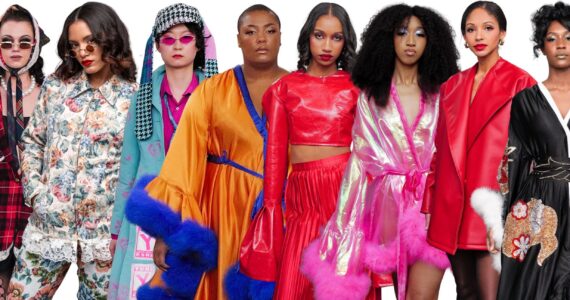Bikinis have emerged as one of the most iconic fashion symbols, making their mark in various industries, from the glamorous runways to the captivating world of film, photoshoots, and commercials. These iconic two-piece swimsuits have not only influenced women’s swimwear but also their clothing and lingerie choices, offering a range of options that cater to both modesty and comfort. The evolution of bikinis spans over a century, with a significant shift occurring before World War II. In those times, women’s bathing suits were primarily made of heavy flannel fabric, serving the purpose of preserving modesty rather than enabling women to engage in swimming, water sports, or sunbathing. In adherence to societal norms, these swimming suits resembled belted gowns covering long bloomers, reflecting the prevailing need for concealing the female form in public.
In May 1946, French couture designer Jacques Heim debuted a prototype of the bikini bathing suit. He tried to introduce a similar design in the 1930s, but it was deemed inappropriate exposure (time is crucial). In 1946, he advertised it using skywriting as “the world’s smallest bathing suit.” The same year, another French designer, Louis Réard, released his version. According to fashion folklore, while vacationing on the beaches of Saint Tropez, Réard witnessed ladies rolling up their swimsuits to obtain a better tan and believed a smaller swimsuit was a marketable concept. He dubbed his garment “bikini” after the US atomic testing facility at Bikini Atoll in the Pacific Marshall Islands.
It would take another ten years and then some before the bikini was accepted. This was due in part to the films of Brigitte Bardot and the suntanned physique of Ursula Andress, the very first Bond girl, in 1962. In honor of the upcoming Miami Swimwear Week, we look at the bikini’s evolution from the infamous 1960s through the 2000s.
60s




The bikini in the 60s made use of spandex fabrics. Some of the most common elements in the design were metallics, florals, rope details, belts and buttons, Psychedelic Prints, and knits. Ursula Andress made film and fashion history in 1962 by wearing a white two-piece bikini in the first James Bond film, “Dr. No.” The moment became so memorable that Halle Berry reproduced it 40 years later in “Die Another Day.” In 1964, following the release of “Dr. No,” Sports Illustrated debuted its annual Swimsuit Issue. Model Babette March graced the cover in a white bikini. According to Time magazine, by 1965, 65 percent of the “young set” wore bikinis. A new wave of designs reflected the playful and electric atmosphere, with colorful, bright, neon, and printed designs being introduced.
70s





The seventies showcased mismatching, crochet, fringe, lace, sexy little cutouts, tie-Fronts, and cashmere-printed swimsuits. Swim tops that looked like bras were a Major Thing in the early ’70s. Some of the most common features in 70s swimsuits were low plunges, halter necklines that started in the center and then tied at the back of your neck, matching patterns for sets, and Backless or Low-Back one-piece suits. Accessorizing was a huge deal around 1976, so big hats and glitzy jewels were necessary for a day in the sun. By the late ’70s, teeny bikinis were more en vogue than ever, and bandeaus were super hot.
80s



The 1980s featured bold, colorful, and patterned swimsuits. In the 1980s, plunging suits became the new norm, revealing more than ever before. Far from the modest designs of the early 1900s, swimwear had now become a way to make a statement, and designs focused on trends—mixing and matching to make a statement—became popular. Bikinis continued to dominate the big screen throughout the 1980s. Phoebe Cates changed the swimsuit game when she hit the screen in a teeny-tiny ruched red number in 1982’s Fast Times at Ridgemont High. Swimsuits often featured low, scooped necklines with higher leg cuts. String bikinis were widely popular in 1984, particularly ones with triangle tops. The prevalent style continues to be on trend today.
90s



Bikinis were no longer regarded as inappropriate during the 1990s. The year 1991 was all about neon swimwear. In 1996, bikinis became the official uniform of Olympic beach volleyball players, and the following year, the Miss America pageant lifted its bikini ban, allowing contestants to compete in two pieces. Swimsuit styles developed as bikinis grew more popular. The microkini exposed even more skin, popularizing Brazilian waxing and spray tanning. Karl Lagerfeld debuted his version of the microkini during Chanel’s spring 1996 show. Two years later, swimwear designer Anne Cole debuted the tankini, which incorporates a top that hides the navel.
2000s






Many designs prevalent in the 1990s emerged in the early 2000s. Notably, the tankini popped up. This style is credited to designer Anne Cole. A tankini is essentially a more modest version of a bikini, with the top resembling a tank top and the bottoms like conventional bikini bottoms.
With women’s independence growing in the 1980s-2000s, swimwear again reflected the culture, and more risqué swimwear was introduced onto the market. At the same time, more sports-oriented swimsuits also came onto the market in the 1990s-2000s. Some of the most common features in swimsuits were edgy studded accents, Color-blocked pieces, sarongs, high-neck halter pieces, and swimsuits that showed as much skin as possible—aka monokinis.
2023




Long-Sleeved Swimsuits Are 2023’s Top Swim Trend. This year has delivered more long-sleeved suits in more styles than we’ve ever seen before. Ease into the long-sleeve swimsuit trend by wearing a suit that’s only 50% long-sleeved. Asymmetry is always eye-catching, and there are plenty of asymmetrically designed long-sleeve swimsuits, from bikinis to one-pieces. The trend is best displayed by mimicking the silhouette in sheer fabric. Your fave bikini top will still be the star of the show thanks to ultra-fine swim mesh textiles.
Which bikini era is your favorite?
Follow MEFeater on Twitter, Instagram, Facebook, and Pinterest for more updates.









